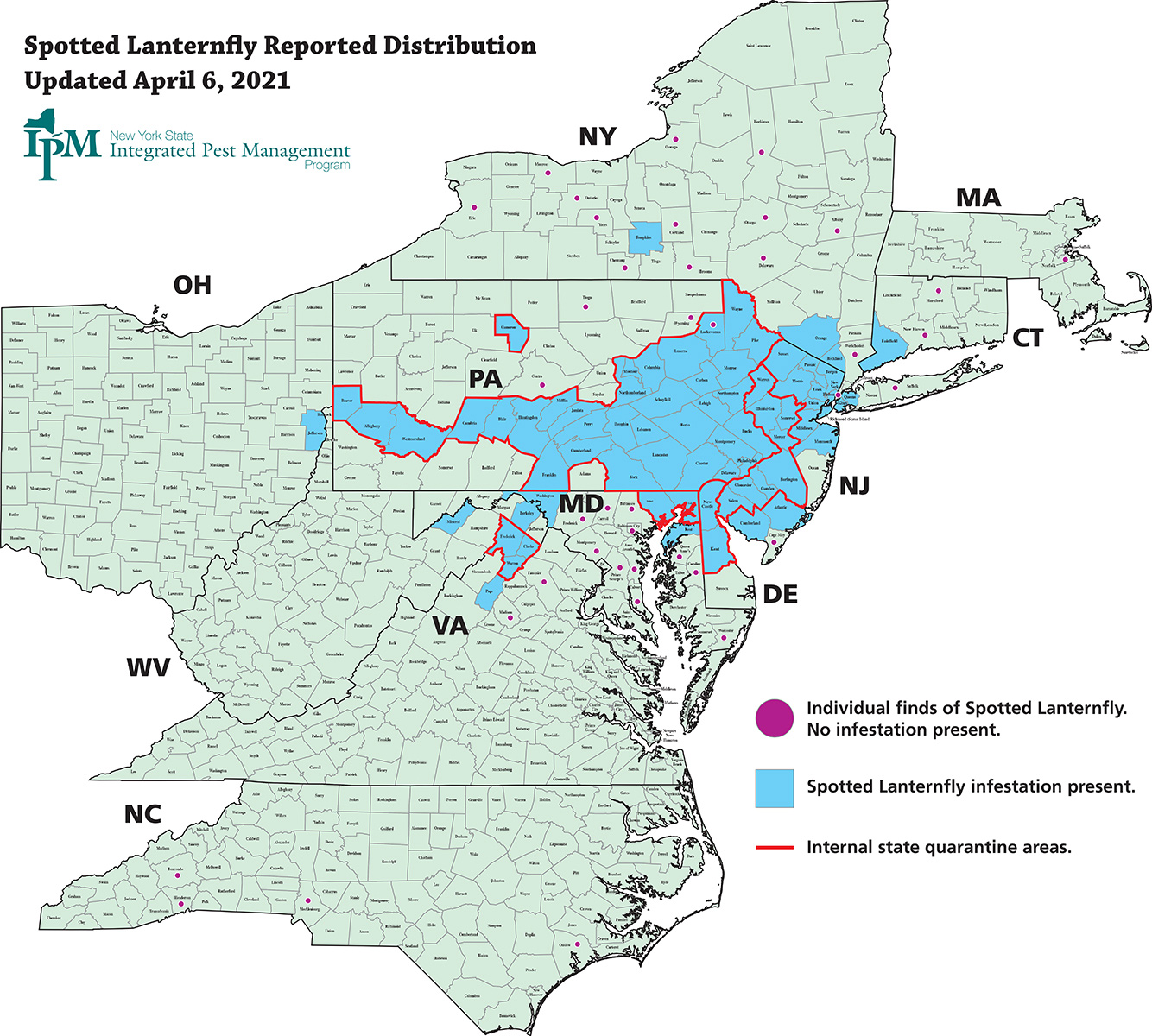

One requirement is for businesses to obtain a permit in order to move regulated articles out of the quarantined area. “Businesses located within the identified quarantine area must follow the requirements of the spotted lanternfly quarantine. Any equipment, trucks, or vehicles not stored indoors any means of conveyance utilized for movement of an article any vehicle or any trailer, wagon.Outdoor household articles, including recreational vehicles lawn tractors or mowers grills grill or furniture covers tarps mobile homes tile stone deck boards or.Shipping containers, such as wood crates or boxes.Outdoor industrial or construction materials or equipment concrete barriers or structures stone, quarry material, ornamental stone, or concrete or construction, landscaping, or remodeling waste.Live or dead trees nursery stock green lumber firewood logs perennial plants garden plants or produce stumps branches mulch or composted or un-composted chips, bark, or yard waste.Any life stage of the spotted lanternfly.

VDACS released a list of regulated articles: VDACS said businesses in the quarantined area are required to obtain a permit and inspect regulated articles to ensure they do not contain the lanternfly at any stage of life. The quarantine also helps businesses avoid additional restrictions that could be placed on the movement of products from spotted lanternfly infested areas to states and regions where the insect has not been detected,” a release said. “The Virginia Spotted Lanternfly Quarantine was established in 2019 to slow the spread of this invasive insect pest to un-infested areas of the Commonwealth. The localities were added after survey data showed the insects have become prevalent there.įrederick, Clarke and Warren counties and the city of Winchester were previously in the zone and will remain in the quarantine zone. The expanded areas now include the counties of Albemarle, Augusta, Carroll, Page, Prince William, Rockbridge, Rockingham, Shenandoah, and Wythe and the cities of Buena Vista, Charlottesville, Harrisonburg, Lexington, Lynchburg, Manassas, Manassas Park, Staunton, and Waynesboro. (WWBT) - The Virginia Department of Agriculture and Consumer Services (VDACS) has expanded the Virginia Spotted Lanternfly Quarantine zone in an effort to slow the spread of the invasive insect. and Pacific Northwest are vulnerable to establishment of the spotted lanternfly if it finds its way there. Management of SLF is focused on preventing their spread on vehicles or other objects through quarantines, trapping of nymphs, removal of host plants, and chemical control.RICHMOND, Va. A new habitat-modeling study shows most of New England and the mid-Atlantic states as well as parts of the central U.S. Egg masses laid by females are light gray and covered by a mud-like substance and can be deposited on nearly any relatively flat surface such as tree trunks, buildings, fences, rocks, vehicles, or train cars. SLF nymphs and adults may also congregate in swarms in yards and farms, making them a nuisance pest. The honeydew is also colonized by a fungus called “sooty mold” which can ruin grape and hops harvests, decrease photosynthesis, and is generally unsightly. In addition to feeding damage, SLF nymphs and adults produce copious amounts of sticky, sugary liquid known as “honeydew” which can be attractive to ants, flies, and wasps. Favored hosts include the non-native invasive tree-of-heaven, grapes, and hops. SLF feed on a wide variety of woody and herbaceous plants, causing wilting and dieback and stress that can make host plants more susceptible to damage by other biotic or abiotic factors. Additional infestations, or individual SLF or egg masses, have since been documented in several other states. It was first discovered in North America in southeastern Pennsylvania in 2014. Call or email Plant Pest Control Section of the Ohio Department of Agriculture: (614) 728-6400 or Report via mobile app: EDDMapS Great Lakes Early Detection Network.If you think you have found SLF, please try to collect a sample or take a quality photo, and then PLEASE REPORT it: Spotted lanternfly (SLF) is a type of planthopper insect native to Asia. Fall 2022 DNAP eNews - Prairie Restoration.


 0 kommentar(er)
0 kommentar(er)
